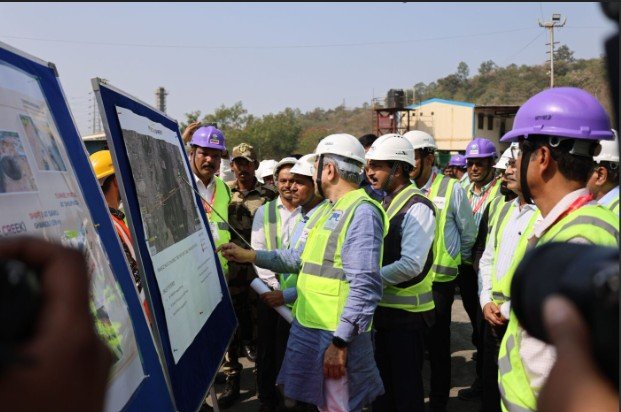Vaishnaw Flags Completion of Bullet Train Tunnel; First Phase Scheduled for 2027
Railway Minister Ashwini Vaishnaw inaugurates 4.88 km tunnel breakthrough, marking a key milestone in India’s first high-speed rail project.
Mumbai, Sep 20: A significant milestone was achieved for the Mumbai-Ahmedabad bullet train project as a 4.88 km-long tunnel between Shilphata and Ghansoli was successfully broken through on Saturday. Railway Minister Ashwini Vaishnaw inaugurated the breakthrough, calling it a “landmark achievement” for India’s first high-speed rail corridor.
Speaking to reporters in Ghansoli, Vaishnaw stated that the first phase of the project, covering the Surat-Bilimora section, is expected to start in December 2027. The bullet train is being designed as an affordable mode of transport for the middle class, with fares expected to remain reasonable.
“The Google Maps app shows a nine-hour journey between Mumbai and Ahmedabad, but the bullet train will reduce it to just two hours and seven minutes,” Vaishnaw said. The first phase will run on the Surat-Bilimora section in 2027, reaching Thane in 2028 and the Bandra Kurla Complex (BKC) in 2029. During peak hours, trains will depart every 10 minutes once the network stabilizes, while ticket reservations will not be required for travel between Mumbai and Ahmedabad.
At the tunnel site, Vaishnaw triggered a controlled dynamite blast to complete the final layer of excavation. The tunnel, part of a 21 km underground stretch between BKC and Shilphata, including a 7 km segment beneath Thane Creek, was constructed using the New Austrian Tunnel Method (NATM). Excavation began in May 2024, and the tunnel now connects the Savali shaft to the portal at Shilphata, linking to the viaduct portion of the project.
The tunnel has an internal width of 12.6 metres and will be a single-tube, 13.1-metre diameter structure accommodating twin tracks. Remaining work includes waterproofing, lining, finishing, and equipment installation, while the rest of the 16 km tunnel will be completed using tunnel boring machines (TBMs).
Comprehensive safety measures are in place, including settlement markers, piezometers, inclinometers, strain gauges, and air pumping systems for workers.
The 508 km-long Mumbai-Ahmedabad corridor has already seen completion of 321 km of viaducts, 398 km of piers, 17 river bridges, nine steel bridges, over four lakh noise barriers, 206 km of track bed, and installation of more than 2,000 overhead equipment masts covering 48 km of the mainline viaduct.




